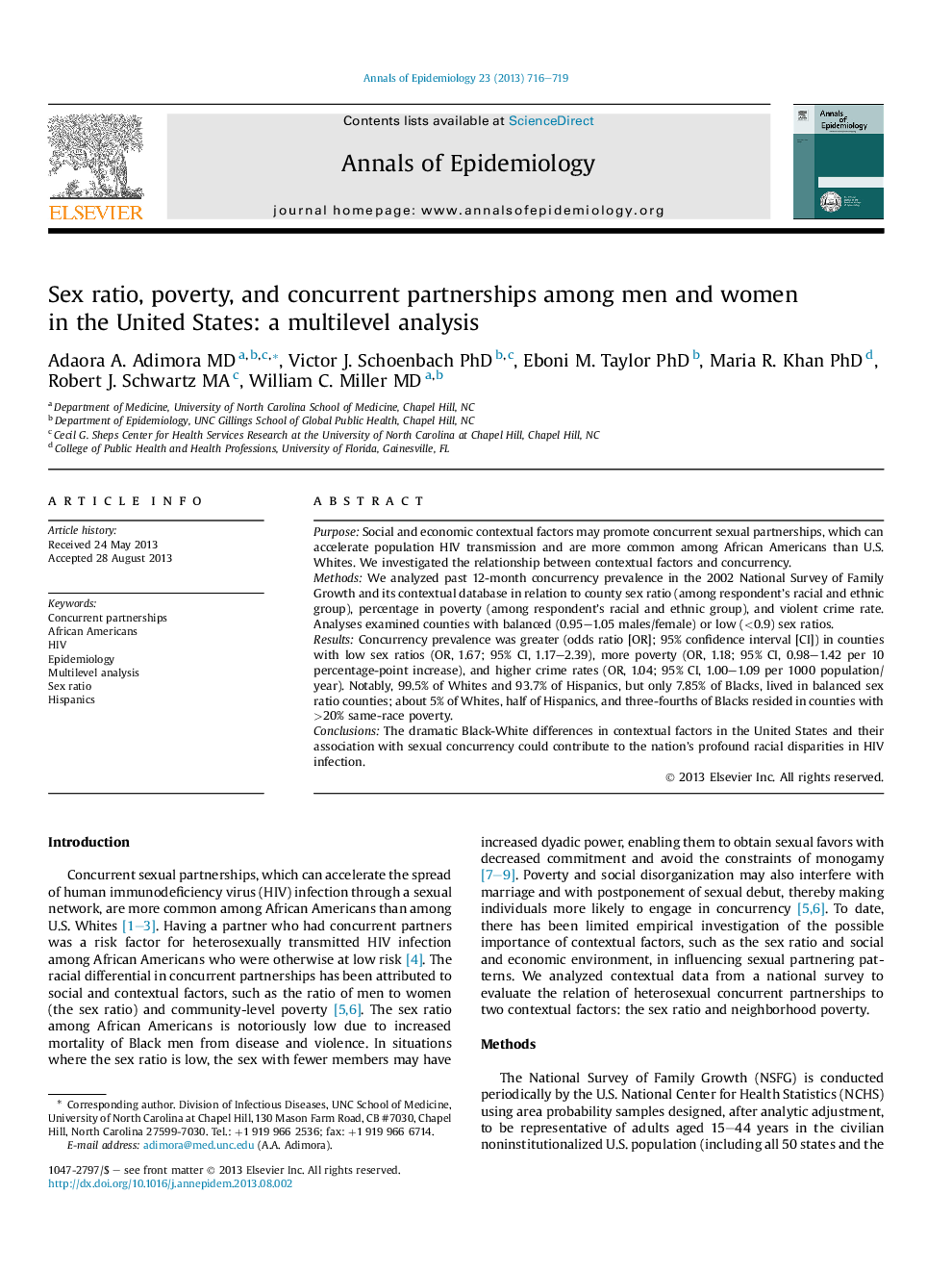| Article ID | Journal | Published Year | Pages | File Type |
|---|---|---|---|---|
| 3444394 | Annals of Epidemiology | 2013 | 4 Pages |
PurposeSocial and economic contextual factors may promote concurrent sexual partnerships, which can accelerate population HIV transmission and are more common among African Americans than U.S. Whites. We investigated the relationship between contextual factors and concurrency.MethodsWe analyzed past 12-month concurrency prevalence in the 2002 National Survey of Family Growth and its contextual database in relation to county sex ratio (among respondent's racial and ethnic group), percentage in poverty (among respondent's racial and ethnic group), and violent crime rate. Analyses examined counties with balanced (0.95–1.05 males/female) or low (<0.9) sex ratios.ResultsConcurrency prevalence was greater (odds ratio [OR]; 95% confidence interval [CI]) in counties with low sex ratios (OR, 1.67; 95% CI, 1.17–2.39), more poverty (OR, 1.18; 95% CI, 0.98–1.42 per 10 percentage-point increase), and higher crime rates (OR, 1.04; 95% CI, 1.00–1.09 per 1000 population/year). Notably, 99.5% of Whites and 93.7% of Hispanics, but only 7.85% of Blacks, lived in balanced sex ratio counties; about 5% of Whites, half of Hispanics, and three-fourths of Blacks resided in counties with >20% same-race poverty.ConclusionsThe dramatic Black-White differences in contextual factors in the United States and their association with sexual concurrency could contribute to the nation's profound racial disparities in HIV infection.
